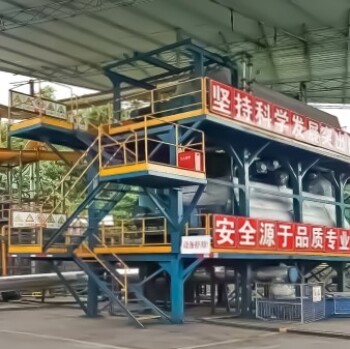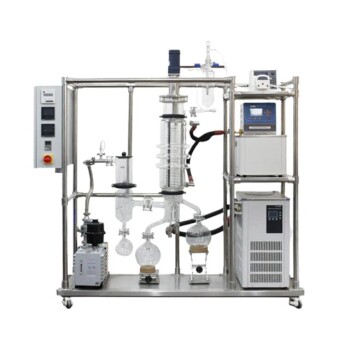Biomass pyrolysis is a thermochemical process that converts biomass into various forms of energy, including charcoal, liquid bio-oil, and gas, under controlled conditions of heat and limited oxygen supply. This method is efficient and cost-effective, facilitating the storage and transportation of biomass while also enabling the extraction of valuable chemicals from the bio-oil.
Process Details:
-
Thermal Degradation: Biomass is heated to high temperatures in the absence of oxygen, which initiates the pyrolysis process. This heating causes the biomass to decompose into different products.
-
Product Formation:
- Charcoal (Biochar): A solid by-product rich in carbon, derived from the non-volatile components of the biomass.
- Bio-oil (Biomass Pyrolysis Oil): A liquid product formed by the cooling of gases produced during pyrolysis. It is a complex mixture of chemicals that can be used as a fuel or further refined into other chemicals.
- Gases: These include non-condensable gases with modest heating values, which can be used for electricity generation.
-
Chemical Changes: During pyrolysis, biomass undergoes chemical transformations, breaking down into simpler compounds like carbohydrates, phenols, aldehydes, ketones, alcohols, and carboxylic acids. These compounds can further react to form more complex molecules such as esters and polymer products.
-
Types of Pyrolysis:
- Slow Pyrolysis: Characterized by low heating rates and long residence times, favoring the production of charcoal.
- Rapid Pyrolysis: Involves higher heating rates and shorter residence times, which maximize the yield of bio-oil.
- Ultrafast Pyrolysis: A faster process that focuses on very high heating rates and minimal residence times, primarily aimed at producing bio-oil.
-
Applications and Benefits:
- Energy Generation: The gases produced can be used for electricity generation, while bio-oil and charcoal serve as alternative fuels.
- Chemical Extraction: Bio-oil can be refined to extract valuable chemicals, enhancing the economic value of biomass.
- Environmental Impact: Pyrolysis reduces the volume of biomass, making it easier to handle and reducing the environmental footprint of biomass disposal.
Historical Context: Pyrolysis has been used since ancient times, notably by the Egyptians for producing tar for boat sealing and in the mummification process. Today, it is recognized as a practical method for converting biomass into biofuels and other valuable products, contributing to sustainable energy solutions.
Conclusion: Biomass pyrolysis is a versatile and efficient method for transforming biomass into useful energy forms and chemicals. It offers significant environmental and economic benefits, making it a key technology in the transition towards renewable energy sources.
Discover the future of sustainable energy solutions with KINTEK SOLUTION, where biomass pyrolysis transforms waste into wealth. Elevate your laboratory’s capabilities and contribute to a greener world with our cutting-edge equipment and expertise in converting biomass into energy-rich biofuels and valuable chemicals. Join the renewable revolution today!












